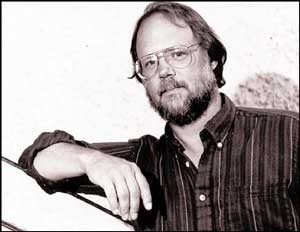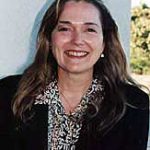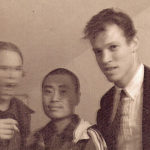Over the past two decades, Tim Cahill has established a reputation as America’s best known (and funniest) adventure travel writer. A founding editor of Outside Magazine, he is the author of seven books, including Hold the Enlightenment, Pass the Butterworms, A Wolverine is Eating My Leg, Jaguars Ripped My Flesh, Pecked to Death By Ducks, and Road Fever. In April, his book about Yellowstone, Lost in My Own Backyard, will be published as part of the Crown Journeys series. He is an editor at large for Outside, and his work appears in National Geographic Adventure, The New York Times Book Review, and other national publications. He lives in Montana.
How did you get started traveling?
I was 10 years old and told my father that “all the other kids” got to go to Florida or Arizona, and I never got to go anywhere. He said the YMCA swimming team traveled all over the state (Wisconsin) and that if I made the team I could go. I did in fact make the team and went to such exotic locales as Beloit and Fond du Lac and Green Bay. In fact, I set state records for my age group.
As a result, I believe I have always associated travel with intense physical effort. These days I do a lot of “rough” travel to remote places.
How did you get started writing?
I wanted to be a writer from my early teenage years, but I never told anyone. Writers, in my opinion, were god-like creatures, and to say I was striving to be a writer would be incredibly arrogant. So I kept my ambition a secret, like masturbation. When I graduated from college (Wisconsin) I moved to San Francisco and decided to admit that I wanted to write. I got into the Masters Creative Writing Program at San Francisco State where I wrote a (mercifully unpublished) novel.
What do you consider your first “break” as a travel writer?
A friend of mine was an artist, a painter. He did birds and he was good, but he told me that no one would publish his pictures without a story. He asked me: “as an unpublished novelist, could you do a story for me?” I wrote about vultures and sold the story to the Sunday magazine of the San Francisco Examiner where it was well received. Really. I did a few more stories for this venue where my writing stood out because I wrote more like a novelist than a journalist. This is surely why I was hired by Rolling Stone, which was in SF at the time. I wrote rock and roll for four years, until ’76, when Rolling Stone put together an outdoor magazine called Outside. I helped give birth to the magazine — I was one of two people on the Rolling Stone staff who liked to hike — and began traveling for Outside almost full time. It was more fun than watching rock bands trash hotel rooms.
As a traveler and fact/story-gatherer, what is your biggest challenge on the road?
Boredom. Often you have to wait days for the proper credentials to go places. I prefer to areas that are remote and little known. Remote places are often on some disputed border. Officials don’t want you going there. You could be a spy. This means that you end up sitting in offices for hours and sometimes days. I always bring a big classic book I should have read long ago: Bleak House, War and Peace, etc.
What is your biggest challenge in the writing process?
Thinking about the events and trying to figure out “what it all means.” One way to write is to simply chronicle events. This sometimes constitutes a failure of imagination. The events will work themselves into a story if you think about them enough. It is like holding up a prism to the sun: turn it just the right way and a rainbow of light pours through. So, a word of advice: a person’s journal is the raw material. A story is made from these events. Use the journal to craft the story. Don’t submit a travel journal. Editors routinely toss articles that begin: “December 5, 2003: ‘The twin prop jet dropped down into a patchwork quilt of farmlands…'”
What is your biggest challenge from a business standpoint? Editors? Finances? Promotion?
Editors have improved my stories more often than they’ve ruined them. Promotion is something other people are paid to do. Finances are most problematic. I make pretty good money, but most of it comes from magazines, all of which are currently (2003) suffering an advertising drought. I am currently making 25% less than I was about four years ago. In my house, it is always a scramble from paycheck to paycheck.
Have you ever done other work to make ends meet?
No. Well, I give speeches about writing and sometimes teach a weekend seminar. It is a very small part of my income.
What travel authors or books might you recommend and/or have influenced you?
Anything by Bill Bryson, Paul Theroux, early Dianne Ackerman, Tony Horowitz, and — classified as guilty pleasure — all Elmore Leonard since about 1985. I think Huckleberry Finn teaches us what the conversational novel is about. Tom Wolfe is a big influence. I recall reading The Tangerine Striped Baby (or whatever it is called) and thinking: “you can do that in non-fiction?” Edward Abbey showed how you could write about the outdoors without being self-righteous or shrill. In pieces like “The Dead Man at Grandview Point” he demonstrated how one writes movingly of natural events.
What advice and/or warnings would you give to someone who is considering going into travel writing?
- This is not a way to make a lot of money.
- The travel is difficult on your relationships with loved ones, unless they are coming along with you, which may not be possible. (see #1 above.)
- If you are not in it for the money, it is — in my opinion — the best job in American journalism.
- Editors, for the most part, don’t care “what” you’ve done, or how astounding the physical event may have been. You need to write well. Many others are capable of doing what you have done (probably), so you must write better than they.
- You become a better writer by writing. You become a better travel writer by writing about travel.
- Publishing your work is important. Even if you are giving a piece to some smaller publication for free, you will learn something about your writing. The editor will say something, friends will mention it. You will learn.
- If this is your dream, don’t give up. It takes a while to work your way up to travel features in magazines. Also, first books aren’t always sufficiently appreciated. Almost any writer can tell you that. It goes like this: “I’m not sure I’m a lot better than I was 20 years ago, when all I got were rejection slips. Now it seems they’ll publish anything I write.” It takes time.
What is the biggest reward of life as a travel writer?
I am living out my adolescent dream of travel and adventure. I do not mean this as a pejorative: adolescence is when we are the most idealistic, the most open to the new and the novel. I try to keep that almost childlike attitude; consequently, I am seldom as cynical as I might otherwise be. I think this is a good thing.
Finally, writing is what I do. The writing is why I am published. I am not a stronger climber than others, nor am I better with languages. But I do take care with my writing and feel that it is getting better and better. That is the biggest reward.





